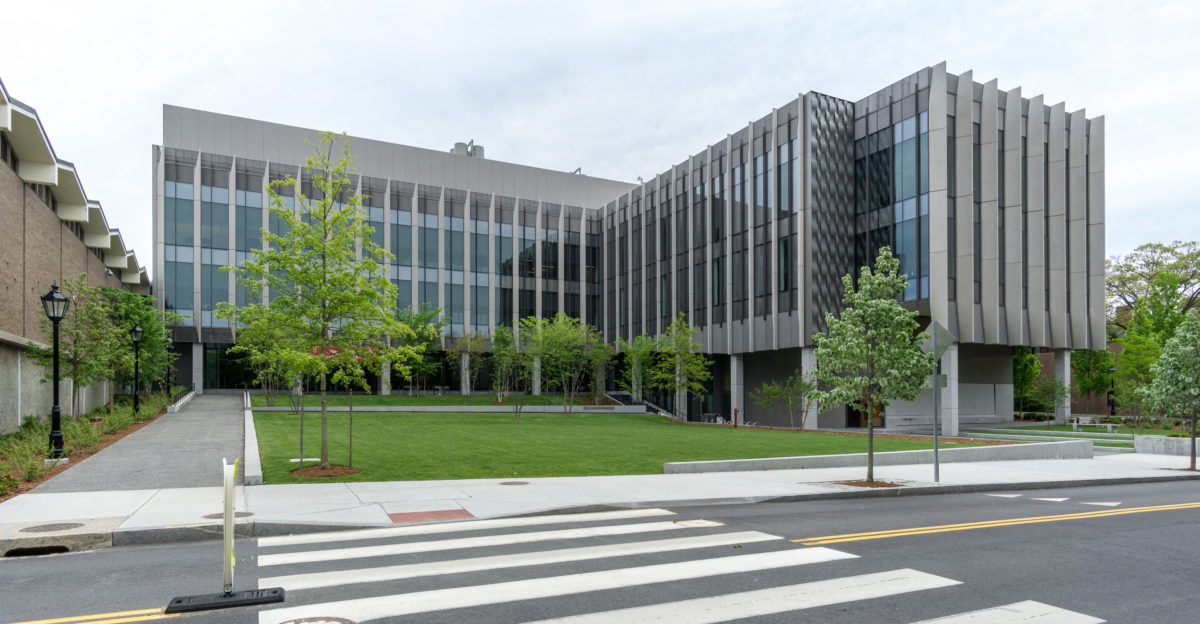Cell cracking is an occupational hazard for most PV technologies and their potential to form thanks to heat or mechanical stress – on production lines and in the field – has hampered the ambitions of many in the solar industry. The European Union’s PHYSIC project has estimated the economic impact of cracking at hundreds of millions of euros per year in lost energy output and repair and replacement costs.
In perovskite solar cells, cracks can form easily and the long-term stability of the material remains a key concern even as the technology edges toward commercial production.
“Everybody’s chasing high efficiency, which is important,” said Nitin Padture, director of the Institute for Molecular and Nanoscale Innovation at Brown University in Providence, Rhode Island. “But we also need to be thinking about things like long-term durability and mechanical reliability if we’re going to bring this solar cell technology to the market.”
Bent
With that in mind, students in Padture’s laboratory took a closer look at crack formation in perovskites and conducted a simple demonstration showing they could effectively be healed almost as easily as they form. “In material science, things that are easy to make also tend to be easy to break,” said Padture. “That’s certainly true of perovskites, which are quite brittle. But here we show they’re also quite easy to fix.”
The group’s experiments, described in the paper Facile healing of cracks in organic-inorganic halide perovskite thin films and published in Acta Materialia, consisted of depositing two perovskite thin films (methylammonium lead triiodide and formamidinium lead triiodide) onto a plastic substrate and then bending the substrate to induce cracking in the perovskite.
After using a scanning electron microscope (SEM) to confirm the film had cracked, the researchers bent the substrate in the opposite direction, based on a theory the compressive stress placed on the film would ‘heal’ the cracks. The group also investigated whether heat could have a similar healing effect.
Voila!
SEM imaging showed the cracks had indeed disappeared and further investigation using X-ray diffraction confirmed they had ‘fully healed’ and the area could carry a mechanical load. Heating the substrate to a temperature of 100 degrees Celsius, as well as bending it, were both found to have a healing effect.
Previous studies have established careful exposure to heat and light – as well as additives to precursor materials – can help make perovskite devices more stable. However, those research projects focused more on working out defects and making the materials more stable prior to testing.
Padture acknowledged the difficulty of formulating a commercial application to ‘heal’ cracks in perovskite cells after manufacturing but said he is confident the group’s findings can be of use to the industry.
“It is good news,” he said. “It suggests that fairly simple healing methods may help maintain performance in these kinds of solar cells.”
This content is protected by copyright and may not be reused. If you want to cooperate with us and would like to reuse some of our content, please contact: editors@pv-magazine.com.




By submitting this form you agree to pv magazine using your data for the purposes of publishing your comment.
Your personal data will only be disclosed or otherwise transmitted to third parties for the purposes of spam filtering or if this is necessary for technical maintenance of the website. Any other transfer to third parties will not take place unless this is justified on the basis of applicable data protection regulations or if pv magazine is legally obliged to do so.
You may revoke this consent at any time with effect for the future, in which case your personal data will be deleted immediately. Otherwise, your data will be deleted if pv magazine has processed your request or the purpose of data storage is fulfilled.
Further information on data privacy can be found in our Data Protection Policy.